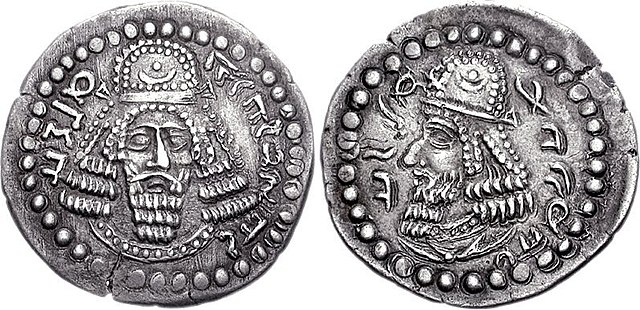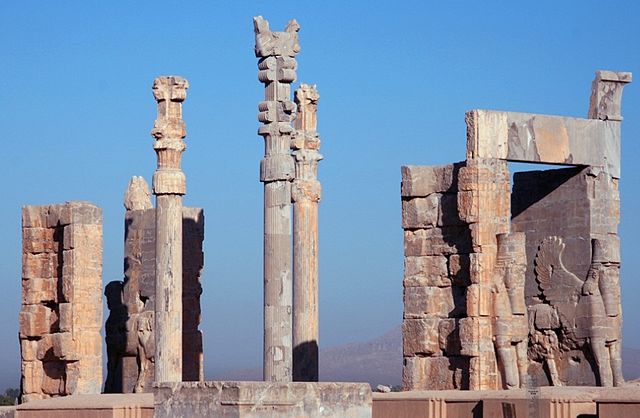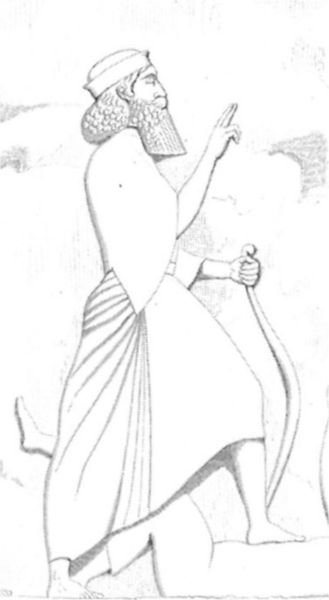Istakhr was an ancient city in Fars province, five kilometres north of Persepolis in southwestern Iran. It flourished as the capital of the Persian Frataraka governors and Kings of Persis from the third century BC to the early 3rd century AD. It reached its apex under the Sasanian Empire, and was the hometown of the Sasanian dynasty. Istakhr briefly served as the first capital of the Sasanian Empire from 224 to 226 AD and then as principal city, region, and religious centre of the Sasanian province of Pars.
Columns at Istakhr
Baydad, the first recorded frataraka of Persis, early 3rd century BC. Coin minted in Istakhr. Obv: Baydad with short beard, mustache, earring and satrapal headdress (kyrbasia). Rev: Baydad standing to the left of a fire temple of Ahura Mazda, standard located on the other side of the temple
Coin of Ardakhshir (Artaxerxes), frataraka of Persis, early-mid 3rd century BC. Coin minted in Istakhr. Obv: Ardakhshir wearing mustache, earring and satrapal headdress (kyrbasia). Rev: Ardakhshir standing in front of a fire temple of Ahura Mazda, standard located on the other side of the temple
Ardashir I, as King Artaxerxes (Ardaxsir) V of Persis. Circa CE 205/6-223/4, minted in Istakhr. Obv: Bearded facing head, wearing diadem and Parthian-style tiara. Rev: Bearded head of Papak, wearing diadem and Parthian-style tiara.
Persepolis was the ceremonial capital of the Achaemenid Empire. It is situated in the plains of Marvdasht, encircled by southern Zagros mountains, Fars province of Iran. It is one of the key Iranian Cultural heritages. The city of Shiraz is situated 60 km (37 mi) southwest of Persepolis. UNESCO declared the ruins of Persepolis a World Heritage Site in 1979.
Persepolis
As is typical of Achaemenid cities, Persepolis was built on a (partially) artificial platform.
Darius the Great, by Eugène Flandin (1840)
Persepolis in 1920s, photo by Harold Weston








